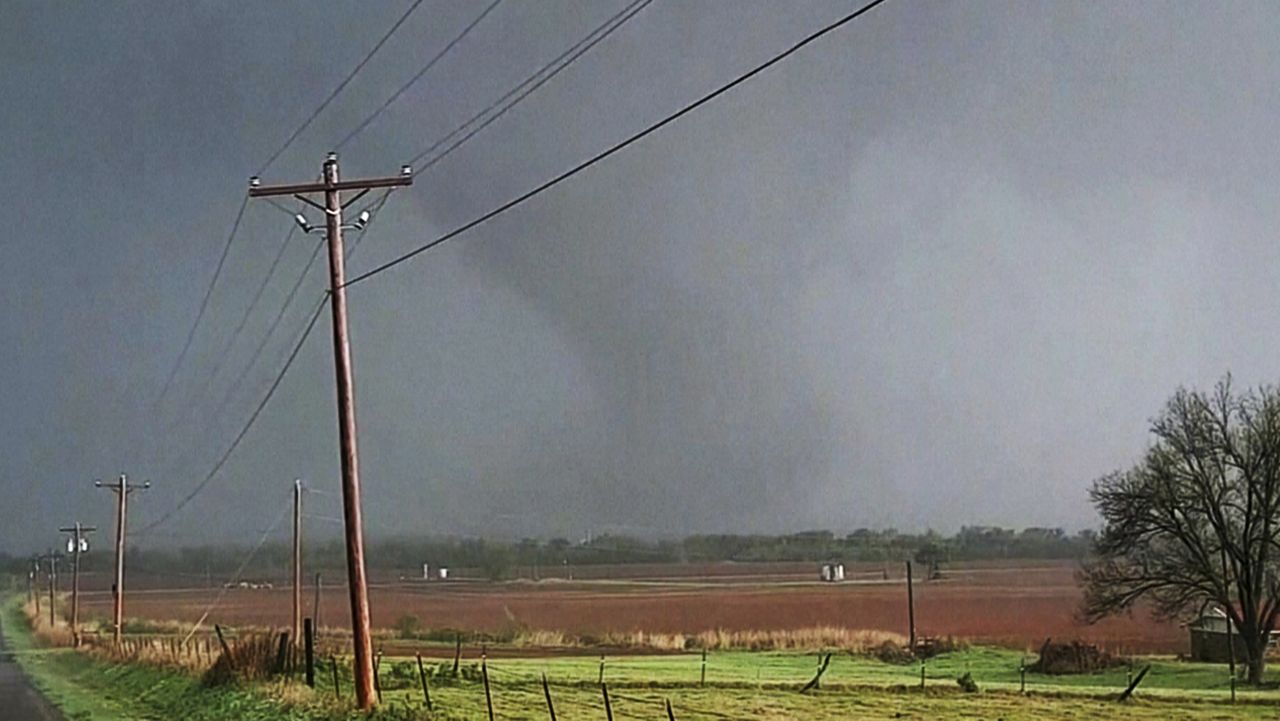Severe weather and tornadoes can occur at any time of the year. However, most of our tornadic activity in Ohio happens during the spring and summer, between the months of April and July. So when a tornado forms in the winter, it is a rare sight.
This year, the overall weather pattern for the end of winter and start of spring was favorable for tornadoes.
Warm air clashing with cold air, ample moisture and other factors led to several rounds of severe storms.
During a typical year, we average 21 tornadoes in Ohio. This number is determined by the Storm Prediction Center and uses data gathered from the last 25 years.
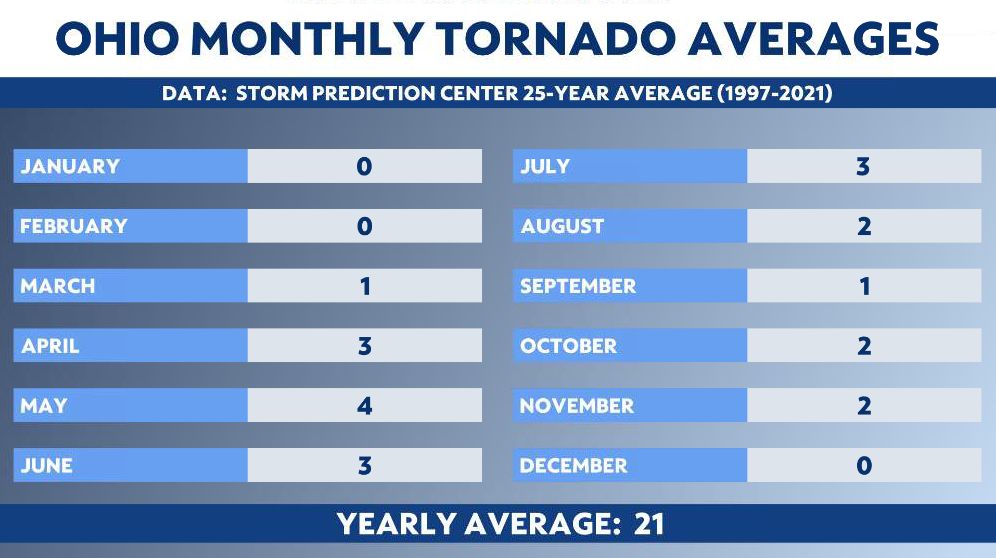
It is safe to say that 2023 is an unusual year.
As of April 27, the National Weather Service has confirmed 23 tornadoes, already surpassing our yearly average.
Even more incredible is the fact that these took place between Feb. 27 and April 5, a span of roughly a month and a half.
Unseasonably warm and even record-breaking temperatures the week of Feb. 26 helped set the stage for two rounds of severe weather.
The first round of thunderstorms developed during the mid-to-late afternoon on Monday.
Five tornadoes formed, including two in the Miami Valley, two on the outskirts of Columbus and one near Van Wert.
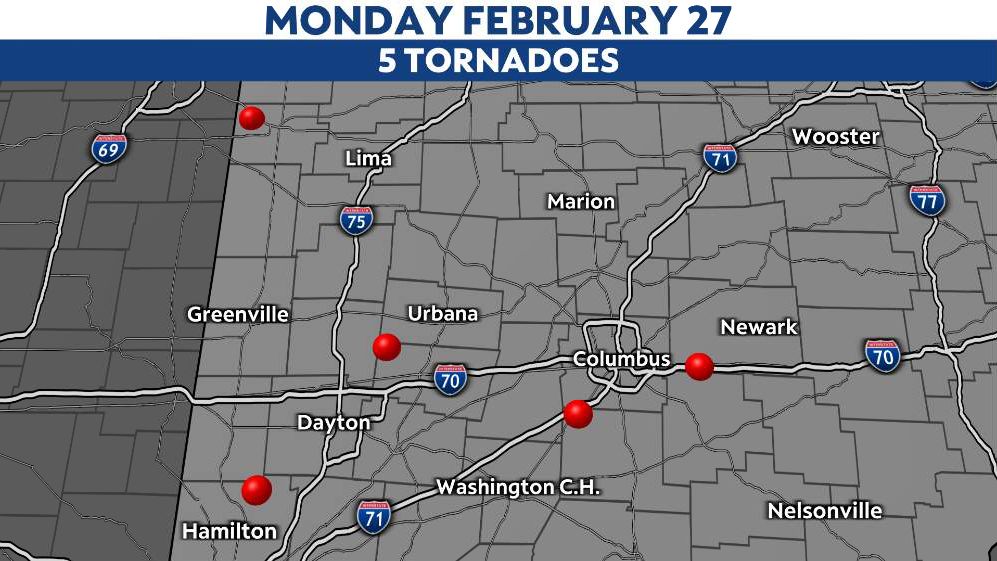
Just four days later, on Friday, another cold front brought more hazardous weather to the state.
Storms developed quickly and dropped several brief tornadoes during the early evening.
Four tornadoes formed east of Cincinnati, including two in Highland County.
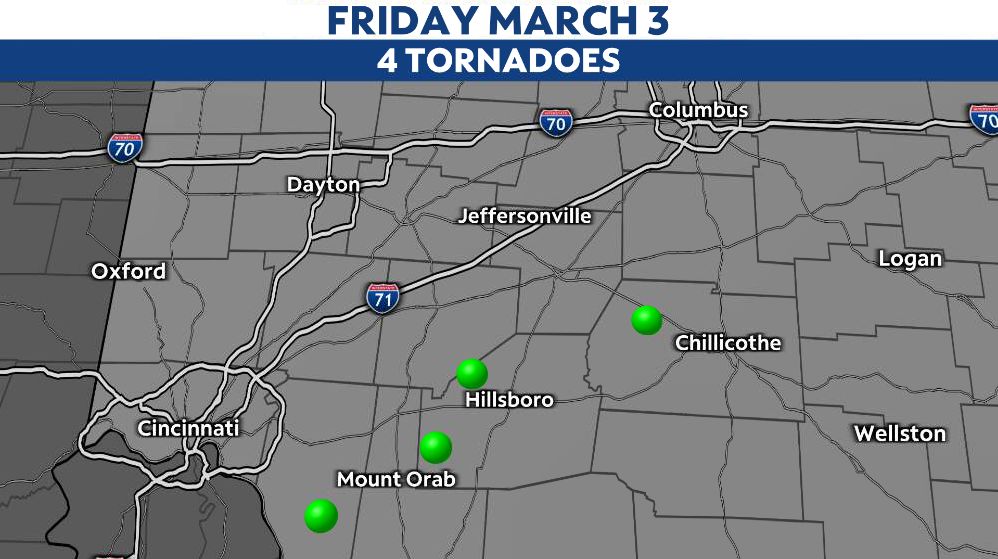
Severe weather after dark is especially dangerous, and unfortunately, a line of thunderstorms swept through Ohio during the overnight hours of March 31 into April 1. This line of severe storms produced 12 tornadoes, many of which caused damage while only being on the ground for a minute or two.
One tornado, however, was on the ground for 13 minutes and traveled just over 17 miles. This tornado caused quite a bit of damage near Wapakoneta and injured seven people when their trailers were overturned at a local campground. Maximum wind speeds reached 110 miles per hour.
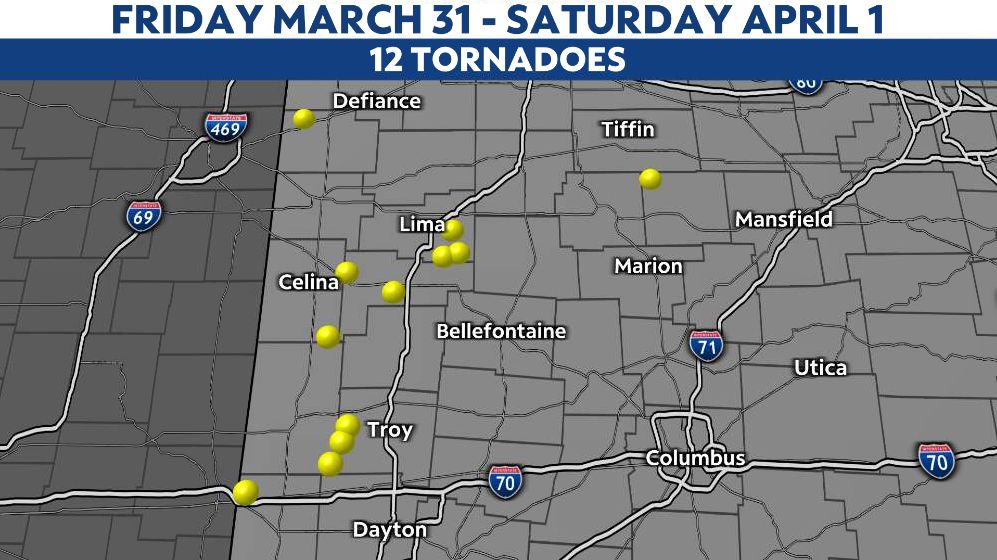
Part of a multi-state tornado outbreak, most of the tornadoes in Ohio were confined to western sections near the Interstate 75 corridor. However, one tornado was observed as far north as Paulding County and one as far east as Crawford County.
Less than a week after the overnight tornadoes, another round of scattered severe thunderstorms developed on April 5.
The National Weather Service confirmed two tornadoes near Lancaster, which caused sporadic tree, power line and property damage.
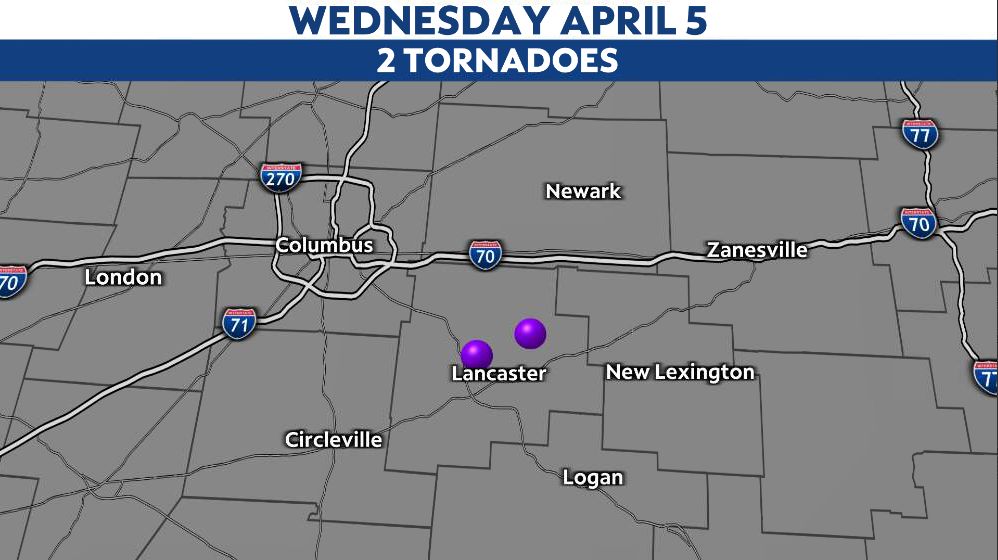
With 2023 off to a busy start, now is a great time to review your severe weather safety plan. Remember to stay weather aware, especially on days when severe storms are in the forecast.
Our team of meteorologists dives deep into the science of weather and breaks down timely weather data and information. To view more weather and climate stories, check out our weather blogs section.



